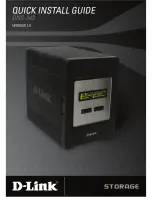
ND-91285-001(E)
DECEMBER, 1999
Page 383
Revision 1.0
(1/3)
UNIFORM CALL DISTRIBUTION (UCD)
GENERAL DESCRIPTION
The UCD feature permits incoming calls to terminate at a prearranged group of stations (60 stations
per group) in the form of equal distribution in the exact order of arrival. Supervisor stations may monitor
conversations of UCD stations.
STATION APPLICATION
All stations
OPERATING PROCEDURE
To monitor conversation/to cancel monitoring (Supervisor only):
1. Lift handset, or depress
Speaker
key, and receive Dial Tone.
2. Dial monitor feature access code, or depress
MONITOR
key.
3. Dial station number to be monitored.
4. Monitor conversation via handset or speaker.
Note:
Monitoring telephone conversations may be illegal under certain circumstances and laws. Consult
a legal advisor before implementing the monitoring of telephone conversations.
SERVICE CONDITIONS
1. A maximum of 16 UCD groups may be assigned per system. Each UCD group is assigned a pilot
number. Calls directed to the pilot number are directed to that UCD group.
2. Up to 60 stations may be programmed into a single UCD group and up to 512 stations or 256 D
term
s
can be used per system. (if expansion memory is used in MP, up to 512 D
term
s can be used.)
3. Assignment of UCD groups is made by means of the MAINTENANCE ADMINISTRATION TERMI-
NAL (MAT) or CUSTOMER ADMINISTRATION TERMINAL (CAT).
4. UCD groups consist of a pilot station and one or more (max. 60) member stations arranged in a circu-
lar type Hunt Group. A call directed to the circular pattern starts at the next idle station in the prear-
ranged hunt order following the last station to receive a call.
5. If all stations within the UCD group are busy, incoming calls may be serviced in the following ways:
•
remain in queue until an agent becomes available (Ringback Tone provided)
•
immediately overflow to another group, to a station, or to the Attendant
•
remain in queue until an agent becomes available (delayed announcement or music on hold pro-
vided)
•
remain in queue for a preset time (Ringback Tone, delayed announcement, or music on hold pro-
vided), then overflow to another group, to a station, or to the Attendant (Delay Overflow)
Summary of Contents for NEAX 2000
Page 1: ...ND 70916 E ISSUE 1 Feature Programming Manual JANUARY 2000 NEC Corporation ...
Page 157: ...CALL QUEUING 137 A2131 10 CALL QUEUING PROGRAMMING Refer to CALL WAITING DISPLAY page 142 ...
Page 273: ...FAULT MESSAGE 253 A2247 10 FAULT MESSAGE PROGRAMMING Refer to Maintenance Manual ...
Page 402: ...PEG COUNT 382 A2382 10 PEG COUNT PROGRAMMING Refer to the CMB0 B3 of the Command Manual ...
Page 443: ...SELF DIAGNOSIS 423 A2412 10 SELF DIAGNOSIS PROGRAMMING Refer to the Maintenance Manual ...
Page 726: ... A16 A2A10 10 THIS PAGE LEFT BLANK INTENTIONALLY ...
Page 754: ... C26 A2C14 10 THIS PAGE LEFT BLANK INTENTIONALLY ...
Page 772: ...Page viii ND 91285 001 E Revision 1 0 DECEMBER 1999 THIS PAGE LEFT BLANK INTENTIONALLY ...
Page 1192: ...ND 91285 001 E DECEMBER 1999 Page 410 Revision 1 0 THIS PAGE LEFT BLANK INTENTIONALLY ...
Page 1197: ......
Page 1198: ......
Page 1199: ...ND 91285 002 E ISSUE 1 Model 100MX HOSPITALITY FEATURES AND SPECIFICATIONS OCTOBER 1999 ...
















































